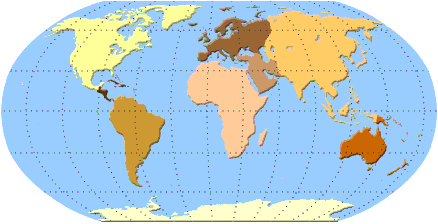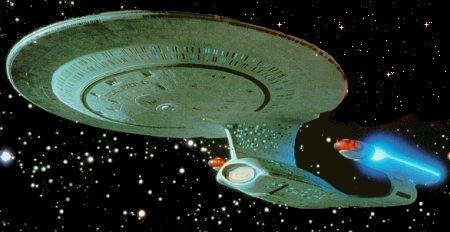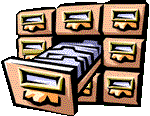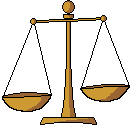 Transport
to the Future WebQuest
Transport
to the Future WebQuest

![]()

For
Mr. Stanton's AP World History Class
Introduction | Task | Process | Resources | Evaluation | Conclusion
![]()

 INTRODUCTION
INTRODUCTION 

Speculation about the future must be carefully done. Clearly, human history has a mixed record. Many individuals believe that steady progress has occurred in world history because of advancing technology and progressive enlightenment. People live longer, women and children receive better treatment, and slavery has been abolished. On the other hand, the 20th century has been marked by unprecedented cruelty and inhumanity. Technology has increased war-time losses and modern weapons are now capable of immeasurable mass destruction. Furthermore, racial and religious intolerance continues to be a problem in many parts of the world. (Stearns, 888-890)
Since its origin, human experience has been described in many differing ways. Issues persist despite important changes in individual societies. The only major theme of the text that has ended is: importance of nomadic-civilization interactions. Even though rigid frameworks have declined, inequality continues in contemporary society. The most troubling instance of inequality at the end of the 20th century involved disparities in earnings and living standards. Gaps increased during 1990s. Environmental degradation remained important because of the effects of expanding populations and industrialization. Many industrial societies are working to improve such conditions. World history presents a mixed picture concerning human organization. Judging its past is complex, as is the case for the future. (Stearns, 895-901)
Introduction | Task | Process | Resources | Evaluation | Conclusion

![]()

 THE TASK
THE TASK 

Each team must carefully read through this WebQuest and all its associated links, including the research ideas.. Each team must complete the following components:
THE ATTACHED WORKSHEET
A VISUAL PRESENTATION ON YOUR VISION OF THE FUTURE
![]()

 THE PROCESS
THE PROCESS 

Click here to learn about evaluating websites for bias and authenticity. (Click the NEXT botton at the bottom through all 7 frames.)
Click here to read an interesting summary on a book about predicting the future.
Click here to find the Past, Present, and Future Issues Worksheet. (Print out and complete this worksheet)
Research and develop possible scenarios for the things that you believe will make history 26 years from today.
1) An introductory slide.
2) A summary of each of your five answers from the Past, Present, and Future Worksheet. (Minimum 3 slides, maximum 5 slides)
3) A conclusion slide.Each Presentation should contain at least 10 images (click here to go to Google.com images search engine.) Overall, the presentation should be visually appealing. Beyond these requirements, any extra bells and whistles are strictly at the group’s discretion. Please note, if any information is quoted, a works cited slide must be added to your presentation. Click here to see the Works Cited for this WebQuest.
Introduction
| Task
| Process
| Resources
| Evaluation
| Conclusion

 RESOURCES
RESOURCES

Be aware that the following sites contain bias in one fashion or another. This is also true for any possible sites and publications that you find on your own. When dealing with present and future issues, opinions can be very strong. Make sure to take that into account as you view these sites and search for information for your presentation.AskERIC - [Online] available http://ericir.syr.edu/ This Department of Education website has a list resources, information guides, a question-answer service and a searchable database.
Facing the Future - [Online] available http://www.global-issues.net/ This site explores what looks to be some of the most important issues humans may face the 21st century.
Foreign Policy Magazine - [Online] available http://www.foreignpolicy.com/resources/worldwide_links.html#global This is a magazine that looks at world issues such as global politics and economics.
Global Issues Organization - [Online] available http://www.globalissues.org/TradeRelated/TradeRelated.asp
This web site looks into global issues that affect everyone and aims to show how most of these issues are inter-related.Grolier Encyclopedia -[Online] available http://www.go.grolier.com/
MCPS has a special license to use the Grolier Encyclopedia and this a great site to find information, maps, and paintings.Human Rights Watch - [Online] available http://www.hrw.org/advocacy/ This site looks at human rights issues around the world.
Third World Network - [Online] available http://www.twnside.org.sg/ This is a network of organizations and individuals involved in issues on development and the Third World.
United Nations Issues on the Agenda - [Online] available http://www.un.org/partners/civil_society/agenda.htm This site gives information on major issues faced by the United Nations today.
US Department of State Global Issues - [Online] available http://usinfo.state.gov/topical/global/ This website explores issues that the US Government deems important for the future of man.
Introduction
| Task
| Process
| Resources
| Evaluation
| Conclusion
![]()

 EVALUATION
EVALUATION 

The final product is worth a total of 100 Points.
- GROUP GRADE FOR THE PRESENTATION (Up to 100 points total) (see The Process section above)
- INDIVIDUAL GRADE FOR GROUP PARTICIPATION (Points will be deducted if participation is unequal)
Please note that if you took the Advance Placement Exam, this project will count as your final exam grade.
![]()

 THE CONCLUSION
THE CONCLUSION 


![]()